| FAQ | Sourdough Starter |
| Making Starter | Hacks |
| Gear | Purchase Starter |
Making sourdough bread is extremely satisfying and a whole lot of fun. I’m convinced that making sourdough is the adult equivalent of playdough 🙂 But there is definitely a learning curve to it. I believe that anyone and everyone can tackle sourdough. In fact, I encourage and enable it every chance I get!

Sourdough FAQ
Sourdough Starter
Sourdough starter is simply fermented mixture of water and flour. It becomes a live culture of healthy bacteria that will act as a leavening agent for your bread.
To make starter from scratch, you will need a kitchen scale (though I will tell you how to work around that as well), whole wheat or pumpernickel flour, and water.
I keep two separate sourdough starters alive. I have a regular sourdough starter that began as whole grain, fresh milled, hard red wheat and distilled water. The other starter is Italian and began life as fermented fruit water mixed with the above mentioned wheat. They each make wonderful bread and can pretty much be used interchangeably. At the beginning of their lives, the Italian starter was much ‘happier’ and active in general, but regular feedings keeps both of them happy now.
A few quick notes before starting:
- Avoid using metal anything when working with stater, I recommend glass or crockery for sourdough
- Avoid using chlorinated water! Your tap water has chlorine in it, so either leave a cup of it on the counter overnight for the chlorine to evaporate out, or buy a bottle of distilled water at the store for this process
- If you have more than one live culture going (kombucha, fermented vegetables, sauerkraut), they must be 6 feet apart! The cultures will cross contaminate and your sourdough starter will get very tart!

Creating Starter
Creating starter is a 5-day process. It is HIGHLY recommended that you use whole wheat or pumpernickel flour for creating sourdough starter from scratch. Regular all purpose flour has been bleached and will contain almost none of the bacteria needed for a healthy starter. Using pumpernickel (rye) flour will give you many added bonus nutrients. After the initial Day One mixture, you can use unbleached flour of any kind, or stick with whole wheat. You will need either:
115g whole wheat flour
&
115g non-chlorinated water
or
1 cup whole wheat flour
&
1/2 cup non-chlorinated water
| Day One | Combine the whole wheat flour in a non-reactive container. Stir everything together, cover loosely and leave out in room temperature for 24 hours |
| Day Two | Whether you see any bubbly action or not, you will discard (throw away) half of your starter mixture, and feed it another 115g flour and 155g water |
| Day Three | You should begin to see activity, bubbles and air pockets. You will begin to feed your starter twice a day. Keep 115g of starter (throw away the rest) and feed it 115g of flour and 115g of water both times, trying to keep the feedings 12 hours apart if possible. |
| Day Four | Again, twice today, keep 115g of starter (throw away the rest) and feed it 115g of flour and 115g of water both times, trying to keep the feedings 12 hours apart if possible. |
| Day Five | Twice today, keep 115g of starter (throw away the rest) and feed it 115g of flour and 115g of water both times, trying to keep the feedings 12 hours apart if possible. At the end of Day Five, your starter should. be active and ready to bake with. Look ahead to see how much starter you will need for your recipe (typically 227g or 1 cup). Keep 115g of starter, discarding the rest, and feed it 115g of flour and water. Let sit overnight and you will be ready to bake in the morning. |
| Day Six | Bake something delicious! |

Sourdough Hacks
You don’t need a bunch of fancy equipment to make sourdough bread. There are several recipes that make a simple loaf in a normal loaf pan. You can even make the Artisan sourdough bread using things in your kitchen now. When I first began to make sourdough bread, it was during the pandemic lockdowns, so I created these hacks to make beautiful bread:
Sourdough Gear
I did receive sourdough gear for Christmas and I love it! The hacks worked well, but when you are ready to step up your game or when your finances allow for it, these are the things I recommend:

Want to purchase starter?
A 1-ounce package of dehydrated starter is $8 + shipping to your location.
This post contains affiliate links
